Wrinkled roses: features, varieties and cultivation
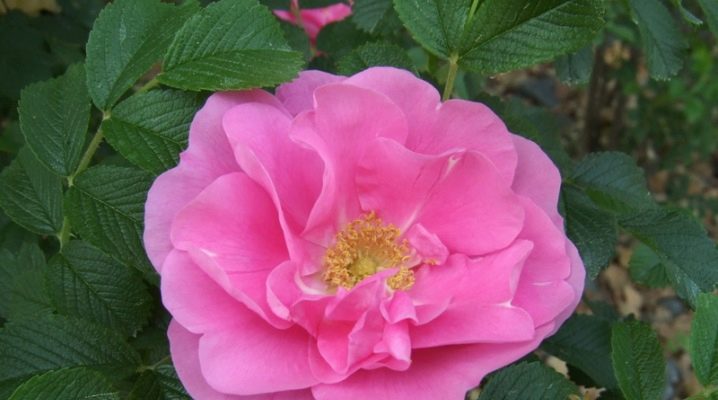
Rosa rugosa, or, in other words, wrinkled rose, rugosa, is a rose hip and belongs to the Pink family. Like all rose hips, this plant is unpretentious, distinguished by beautiful small flowers, sweet aroma and healthy fruits. Most gardeners choose rose hips for landscaping and drafting border compositions in their areas.
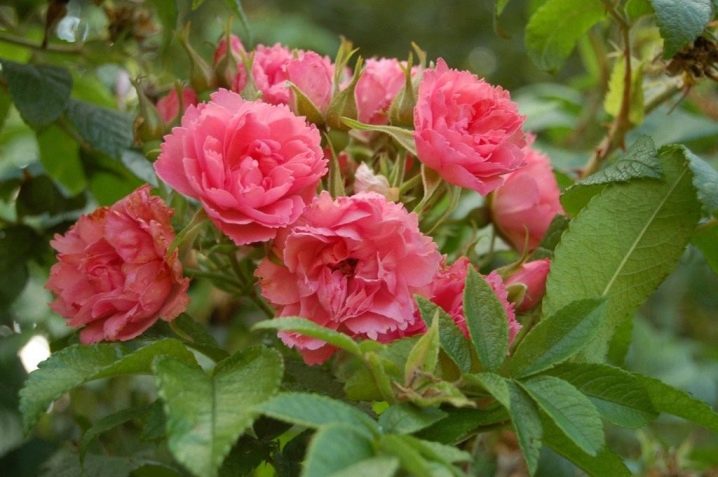
Peculiarities
Rosehips are native to the northern hemisphere. Rugosa grows mainly on the sea coasts, for which the plant was named "coastal flower". It is also found in nature reserves, nature conservation areas. Rose rugoza is a spreading shrub, the height of which can reach several meters. The branches are different in shape. There are ground cover varieties - the stems spread over the soil, and the usual ones - rise above the ground. Over time, old branches are completely bare and woody, acquiring a brown color.
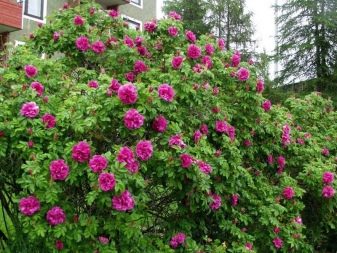

The foliage of the rugosa rose is lush, reminiscent of a "harvester", the size of the crown is up to 2 meters. Young leaves, depending on the variety, are painted in bronze-green shades, the formed leaf is dark green (there are varieties with gray-green foliage), glossy, rough, "wrinkled", in the fall the plate is painted in a bright yellow shade. Single buds or collected in a brush up to 8 pieces.
The fragrant flowers are large, colored in many shades of white, pink, depending on the variety. They are double (up to 180 petals) and standard (5-7 petals). Abundant flowering throughout the summer season, starting in June. Some hybrids are re-blooming. At the end of August, small orange-red fruits are formed.

This rose is unpretentious, resistant to temperature changes. The plant is capable of developing in fresh, salty lands. Differs in good winter hardiness, often found in areas with a cold climate.
When analyzing the description of the characteristics of rugose, the main advantages of the plant can be distinguished:
- fragrant shrub with a pleasant smell;
- undemanding to the composition of the soil;
- It does not require special care;
- the dog rose almost does not get sick;
- withstands temperature drops;
- blooms profusely;
- the size, shape of the plant, allow you to create flowering hedges and other compositions.
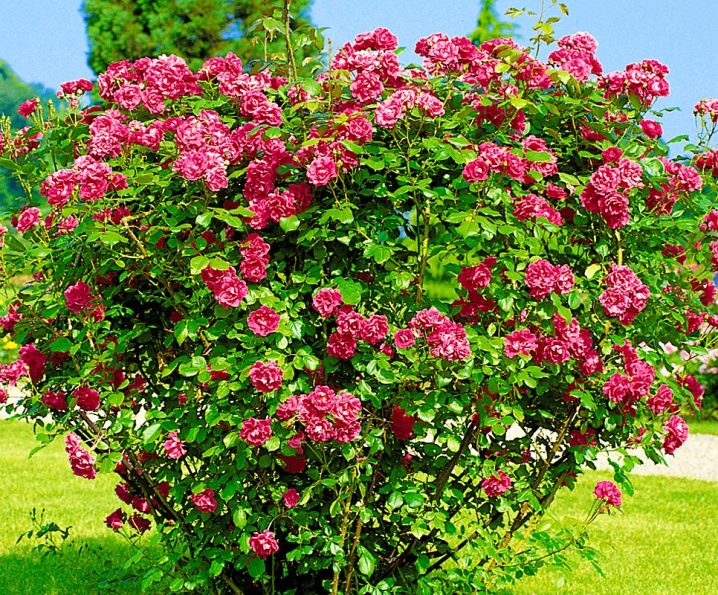
Forming the stems of the rugosa upright along a hedge or support will allow the plant to look like a stem-rose. This method is often used to create flowering fences, when creating tiered landscape compositions, or as a decoration for one of the walls of a house.
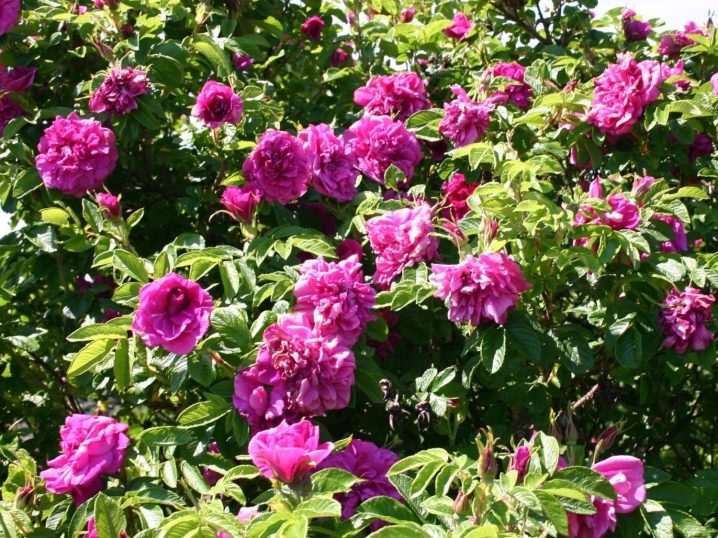
Varieties
Varieties of wrinkled rose hips differ from each other in the shade of the bud, its size and the number of petals, the size of the bush, and the shape of the shoots.

Queen of the North
The plant is highly frost-resistant, resistant to fungal and infectious diseases, and has a fast growth rate. Rosehip reaches a height of 200 cm, in cold areas the growth of the bush is no more than 100 cm. Flowering is long, from June to early September. The flowers are large, double, up to 12 cm in diameter. The color of the petals is intense pink, white-pink.
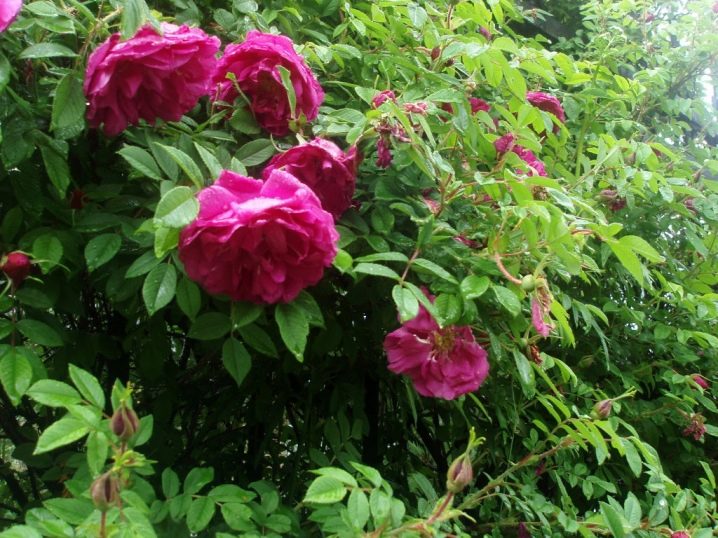
The fruits are rich in useful elements; they are used to make jams, compotes, and tinctures.
Rubra
Sprawling shrub up to 250 cm high. Flowering occurs in summer, in favorable conditions, re-formation of flower buds is possible. The flowers are large, the petals are pink. At the end of August, orange-red fruits are tied. The variety is distinguished by its unpretentiousness, ease of care. "Rubra" is used to form a flowering hedge, planting in a mixborder.

Grootendorst
A hybrid bred in 1918. On the shoots, up to 10 buds of a crimson-red hue are located in brushes. The diameter of the flower is up to 4 cm. Rosehip has become popular due to the unusual shape of the bud, which looks like a carnation, which is why it got another name - "carnation" rose.
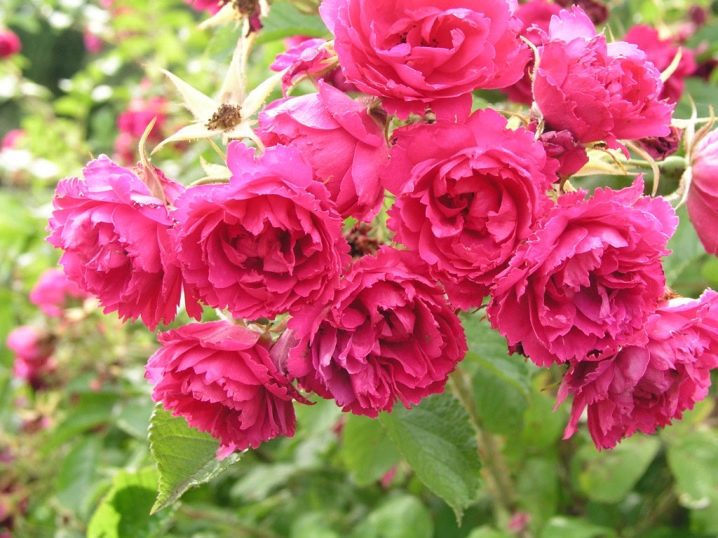
Pink Grootendorst
A hybrid of the usual Grootendorst, featuring pink flowers. Rosehip height reaches 150 cm, a bush with light green leaves, wrinkled, with a shiny outer surface. Flowers are small, up to 3 cm in diameter. Pink Grootendorst blooms profusely.
It is recommended to plant the plant in group plantings, creating a flowering hedge or mixborder.

Abelzieds
A kind of "Rubra" variety. Shrub up to 250 cm high. The buds are colored pinkish, their shape resembles a bowl, the diameter of a blossoming flower is 5-6 cm. The plant is abundant flowering, with a weak aroma. It shows itself well next to other crops in group plantings.

Alba
Flowers of "Alba" are painted in white colors. This variety can withstand the frosts of Siberia, therefore it is recommended for growing in regions with a harsh climate. Rosehip blooms profusely, the aroma is almost not felt. The shrub is suitable for the formation of various compositions, hedges, flower beds.
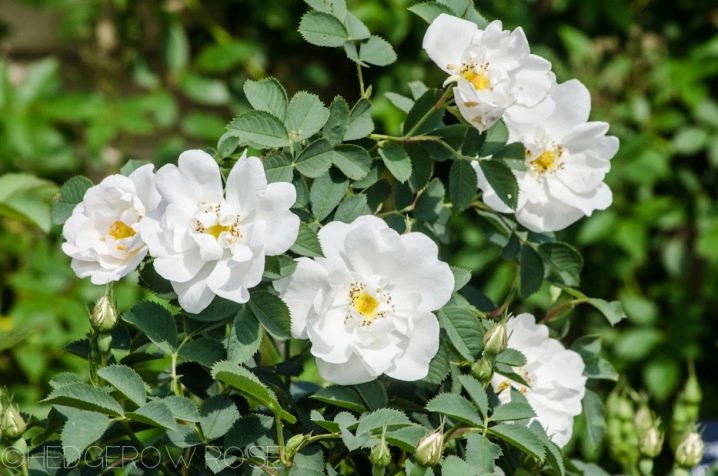
Hansa
"Hansa" looks like "Alba", but the petals of the flowers of this plant are painted in a pale pink hue. Often, the plant is combined with various low-growing crops.
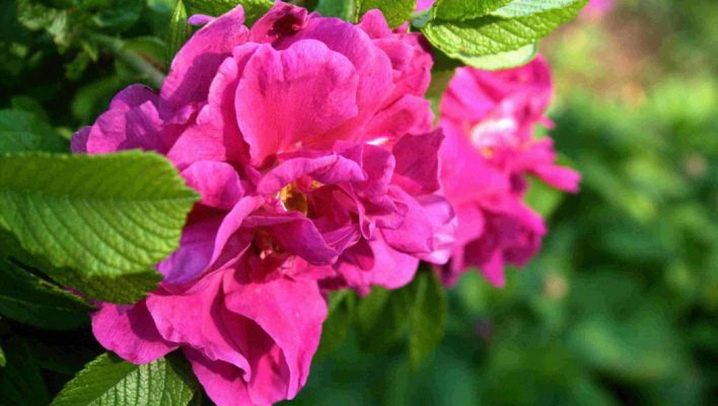
My Hammerberg
The smallest plant of this type - the height of the bush reaches half a meter. The leaf plate is large, wrinkled, bright green in color. The buds are painted in shades of purple, the diameter of the blossoming flower is 9 cm. This variety has a strong aroma. It tolerates frost perfectly, does not require shelter for the winter period.
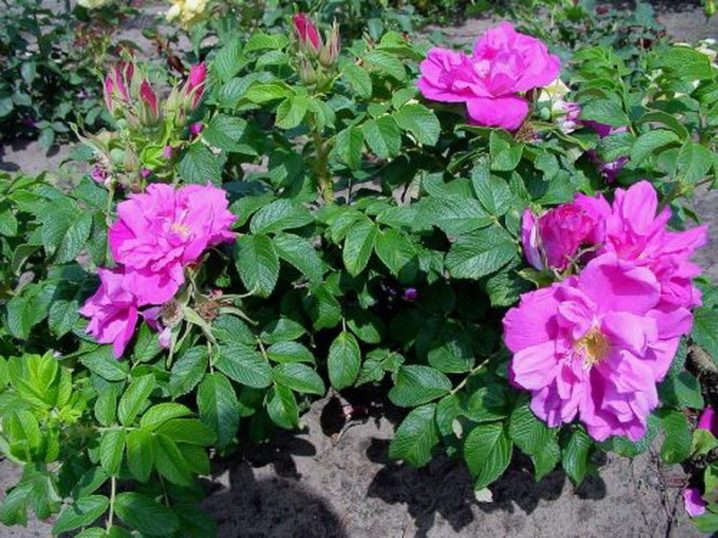
How to choose seedlings?
A seedling can be grafted or grown from a cuttings with an already formed root. When buying a plant, you should pay attention to the following signs and criteria:
- preference should be given to annual seedlings;
- a plant with open roots will easily survive moving and planting in a new place, the main thing is not to let the roots dry out, for which it is recommended to wrap the root system with a wet rag or plant in a bag with a small amount of water or wet earth;
- shoots of seedlings are smooth, without damage;
- it is not recommended to purchase seedlings with blossoming buds, such a plant is most difficult to adapt to a new place;
- seedlings sold in stores in packs can be weakened by long-term winter storage, their root system can be overdried.

Landing
It is recommended to plant a wrinkled rose in spring. For culture, they choose an even, sunny place on the south side. The soil should be selected loamy, saturated with humus. On depleted lands, you should definitely add organic matter to the planting holes. Before planting, the root system of the plant is placed in a clay mash, the pit is filled with a bucket of humus.
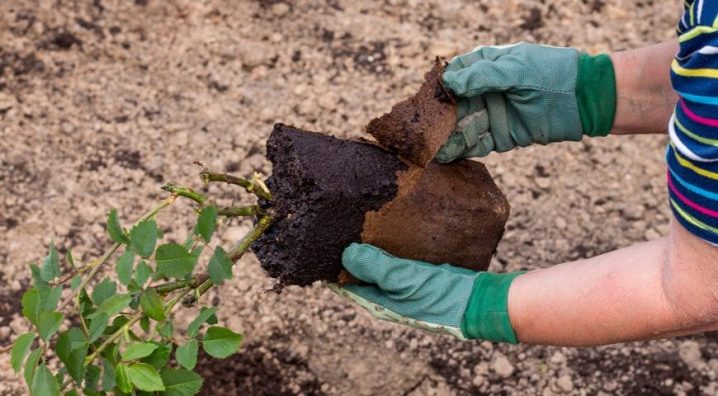
Planting rose hips in a warm region is possible in autumn. Bushes are located up to 150 cm from each other and from neighboring crops. When growing a hedge, planting is carried out within a meter between the plants.
The growth point of the bush should never be covered, otherwise it can lead to the death of the plant. The depth of the new hole must match the depth of the old hole. Freshly planted bushes are watered abundantly, sprinkled on top with dry soil and compacted. To facilitate the adaptation of plants to a new place, the roots are soaked for several hours in water before planting with the addition of growth stimulants - "Kornevin", "Epina".

Rugosa prefers bright areas with shelter from the wind.The most successful solution is to plant the plant on a southern slope or flat area, fenced off by a fence or other buildings. When planting a bush in a mixborder, the plants are placed under the shade of higher crops, trees. A wrinkled rose is practically unpretentious to temperature extremes. Rosehip develops best at 16-22 degrees Celsius. Able to endure frosts up to -40 degrees for a short time. Young plants should be protected from the effects of low temperatures that occur at night in the autumn-winter period by covering the bushes with insulating material or film.

When growing shrubs in the northern regions, it is recommended to completely cover the bushes for the entire dormant period of the plant in the winter months.
The humidity level should be moderate. With an increased moisture content in the soil, the likelihood of developing infectious and fungal diseases of the root system increases, which will ultimately lead to the death of the plant. In the rainy period, it is recommended to cover the plant with a film to reduce the amount of water, and also after the end of prolonged rainfall, refuse watering and spraying for a week.
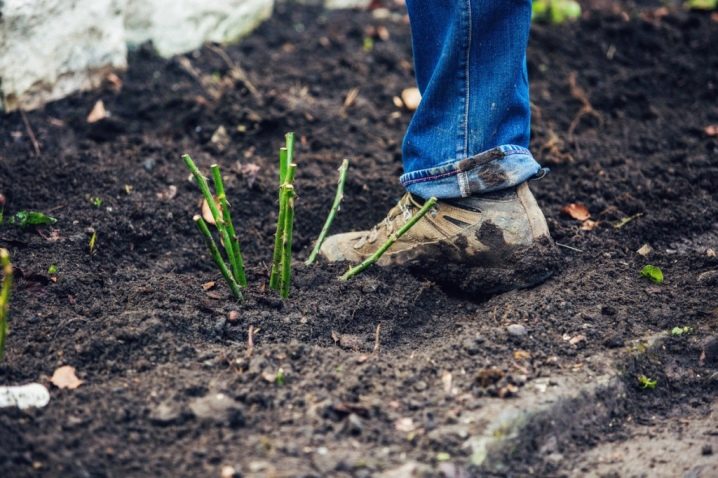
In the hot season, watering is carried out as the upper layers of the soil dries out by about 5 cm. Abundant spraying is required for the plant in the morning and evening hours. It is not recommended to spray in sunny weather, as the sun's rays on the water droplets on the leaves can burn the leaf plate.

Care
The plant does not require careful maintenance, the main thing is not to forget about feeding the rose hips. The rose is most responsive to organic fertilizers, so more than twice a season it is necessary to apply a solution of mullein and humus under the root of the plant. Top dressing is done in the spring and autumn (after pruning).

During the growing season, the plant requires iron and magnesium. Complex mineral fertilizers are used throughout the year, except for the winter months. Top dressing is recommended only after watering the plant, otherwise the root system can be "burned".
If the rose hips have slowed down their growth or the formation of flower buds has frozen, it is worth using special compositions for garden roses.
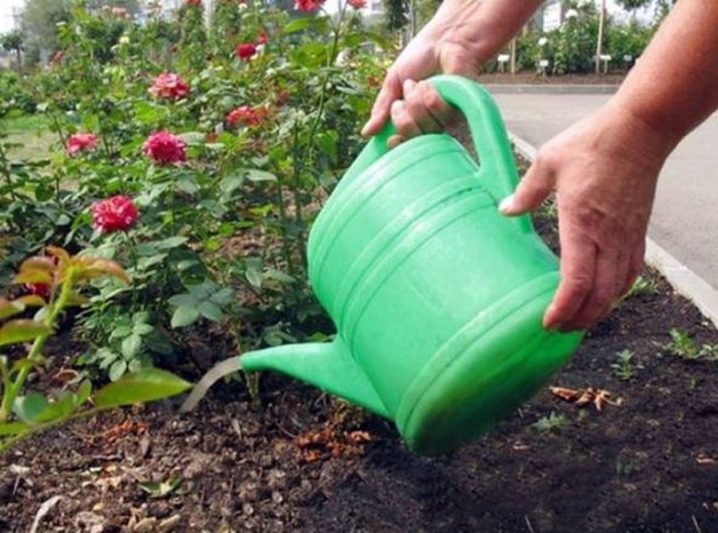
Loosening of the soil is carried out only in the first years of the plant's life (up to three years). During this period, the active formation of the root system of the shrub takes place. Mulching begins in the spring season and ends in the fall. Every month, a one-time loosening of the soil is carried out along the entire diameter of the planting pit. This procedure reduces the activity of weed growth, improves oxygen access to the roots and improves moisture retention in the upper layers of the earth. For mulch, it is worth taking sawdust, dry leaves.
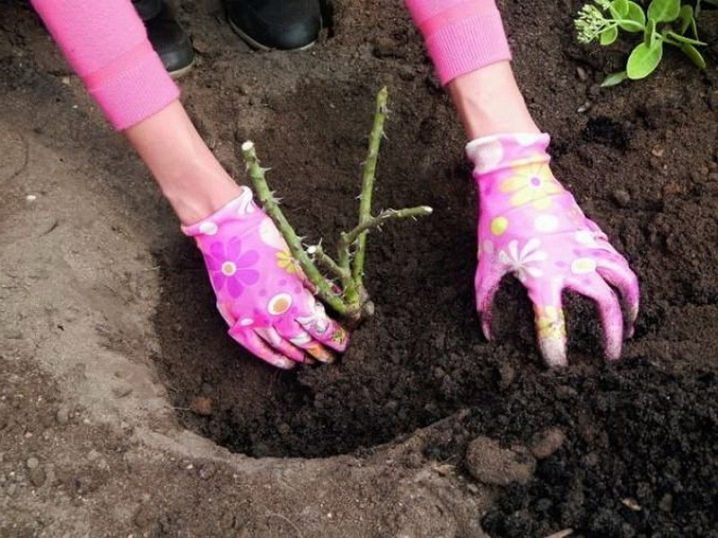
The first shaping is done in the second year of the rosehip's life after planting. Pruning begins in late April before young shoots begin to form. Old, diseased and unripe shoots are removed. Up to 6 buds are left on each branch. When the bush is rejuvenated, the plant is completely pruned, all branches are removed to a length of up to 15 cm from the point of growth of the bush.
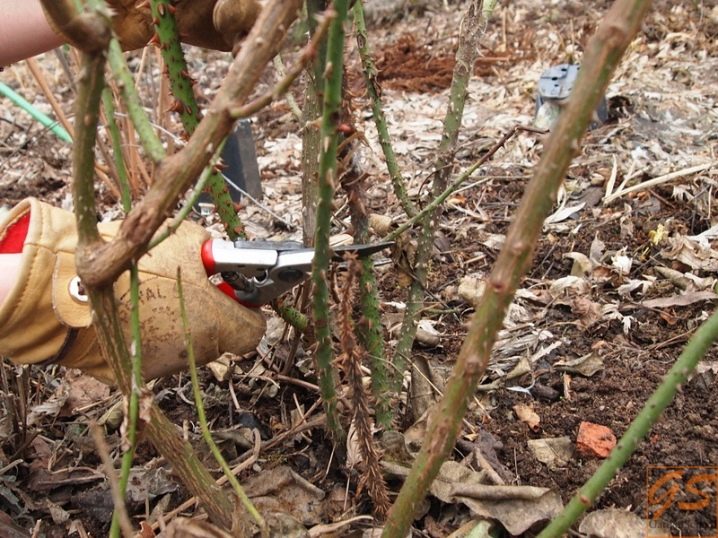
During the flowering period, the bushes are not touched, waiting for the formation of fruits. Flower buds are formed at the ends and in the upper third of the length of the shoots. After flowering, the shoot is shortened to the first leaf with 5 plates. Branches with fruits are shortened according to the same principle. Rugosa lives in one place on average up to 20 years. The plant is transplanted only in case of plant infection, decrease in growth and flowering intensity. The procedure is performed after the end of flowering, fruit formation.
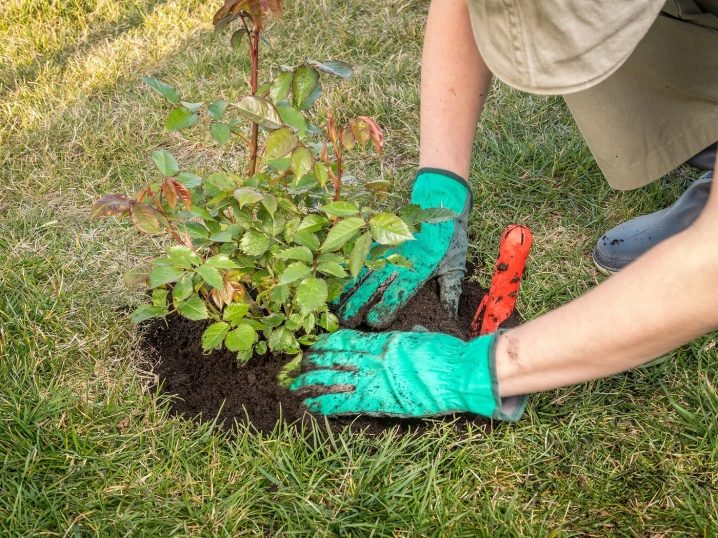
The bush must be dug to the depth of the planting hole, trying to touch the young roots as little as possible. Together with a lump of earth, the plant is transplanted to a new place. After planting, the bush must be watered abundantly and fertilized.
Plants over 7 years old are not recommended to be replanted due to the deteriorating ability of the dog rose over time to take root in new plots of land.

Application in landscape design
Rugosa is widely used to create flower beds and landscape compositions in garden plots, parks, squares and other places. Due to its height (up to 200 cm), the Alba variety is often cultivated as a hedge.

The white rose is planted with conifers in group compositions, most often in the foreground or as "border" bushes dividing the area of the site into zones. The rose hip crown is easy to feed for pruning and shaping.

Pink varieties are grown as a stock rose, combined with other varieties of rose bushes, or planted with a mix. Climbing species are suitable for landscaping walls of houses, arches, fences. Ground cover rose hips are combined with juniper or other spreading evergreen bushes, with flowering plants - peonies, irises, chrysanthemums and others.

For information on how to care for a wrinkled rose, see the next video.

































































































The comment was sent successfully.